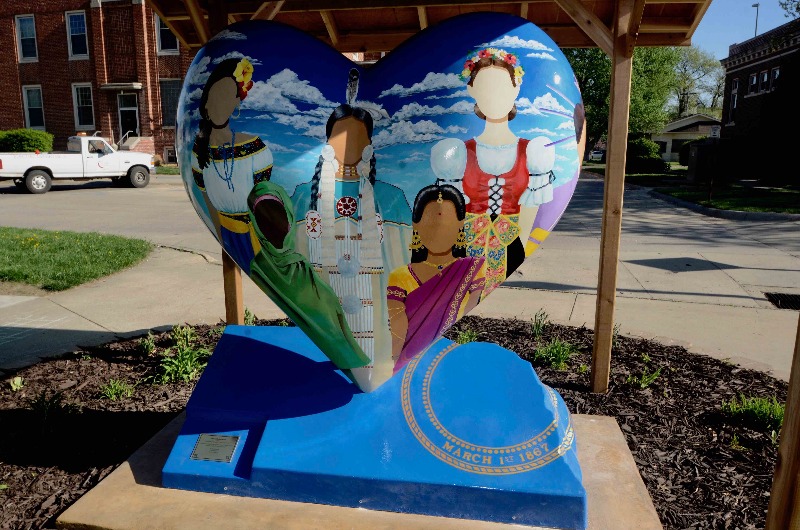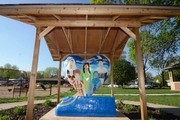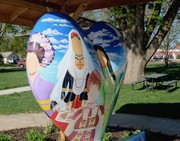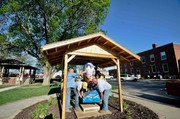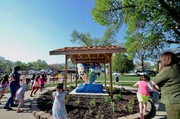"Of Nebraska" heart placed in City Park
It’s difficult to pick out the best feature of City Park, because the heart of the park is different to each Crete resident: slides and climbing structures, shaded areas, or the restored fountain, to name a few.
New to the park today (May 9) is a heart sculpture, “Of Nebraska,” art teacher Michelle Hrbek’s design representing an array of cultures and backgrounds, many of which relate to Crete and Nebraska, both past and present.
The sculpture was part of a public art project, Nebraska By Heart, for which dozens of hearts were painted or adorned with designs by artists and citizens from around the state and auctioned for charity in October 2017. The project was endorsed by the Nebraska 150 Celebration, which brought awareness and participation for the sesquicentennial anniversary of Nebraska Statehood.
The heart was placed between the playground and bandstand where City of Crete crews poured a concrete pad and built a pergola in the circular area once occupied by the fountain. The area is also monitored by security cameras.
Hrbek teaches art at Lincoln Northeast High School and has several connections to Crete. Her husband’s parents, John and Jan Morgan, are former Crete educators and residents and some of her current students attend a church in Crete.
“As an educator in Nebraska, I see so much diversity in my classroom,” Hrbek said. "I really struggled to come up with a multicultural design; I wanted to make sure certain cultures were represented, including newer immigrants and folks who have been here for generations.”
Hrbek said she thought about her own students, like those from Mexico and Sudan, and the process helped formulate her design.
“I’m also excited that Crete bought the heart. The town has almost reinvented itself by welcoming other cultures.”
Hrbek’s design features twelve women in traditional attire depicting cultures and ethnic groups which relate to the state’s pioneering heritage and present day immigration. The women remain faceless to allow viewers the opportunity to see themselves within the representation.
“The individuals are women because within the family it is oftentimes mothers who take care of the family by preparing meals, providing clothing, and carrying on customs and traditions of their culture,” Hrbek said. “The contributions of an array of cultures are what make our history rich and our future bright.”
Learn more about Crete's City Park.




